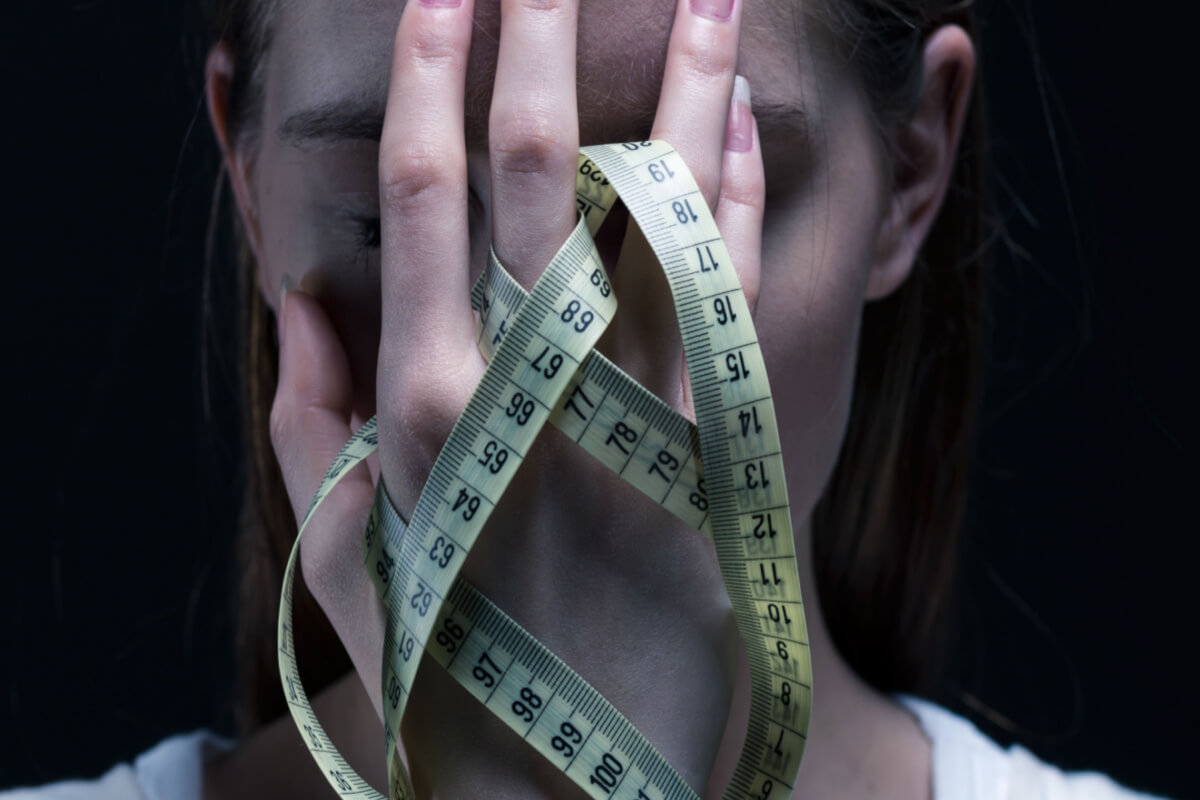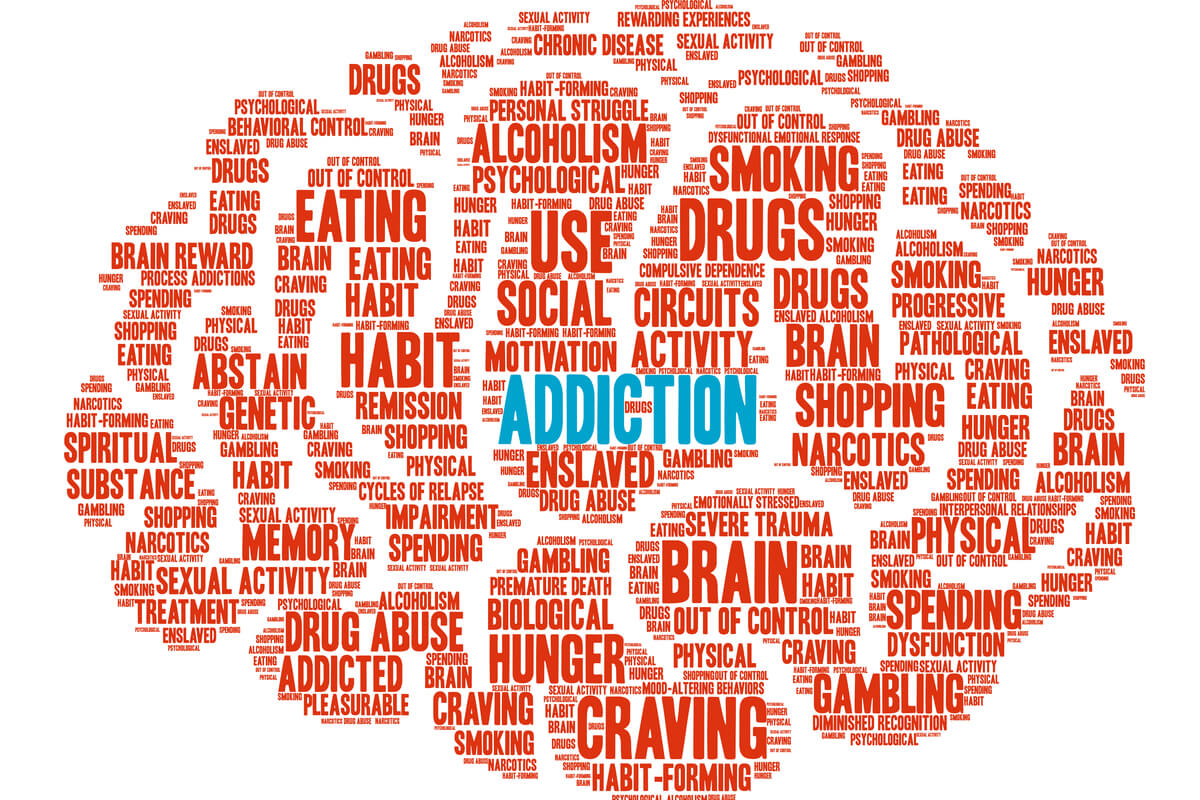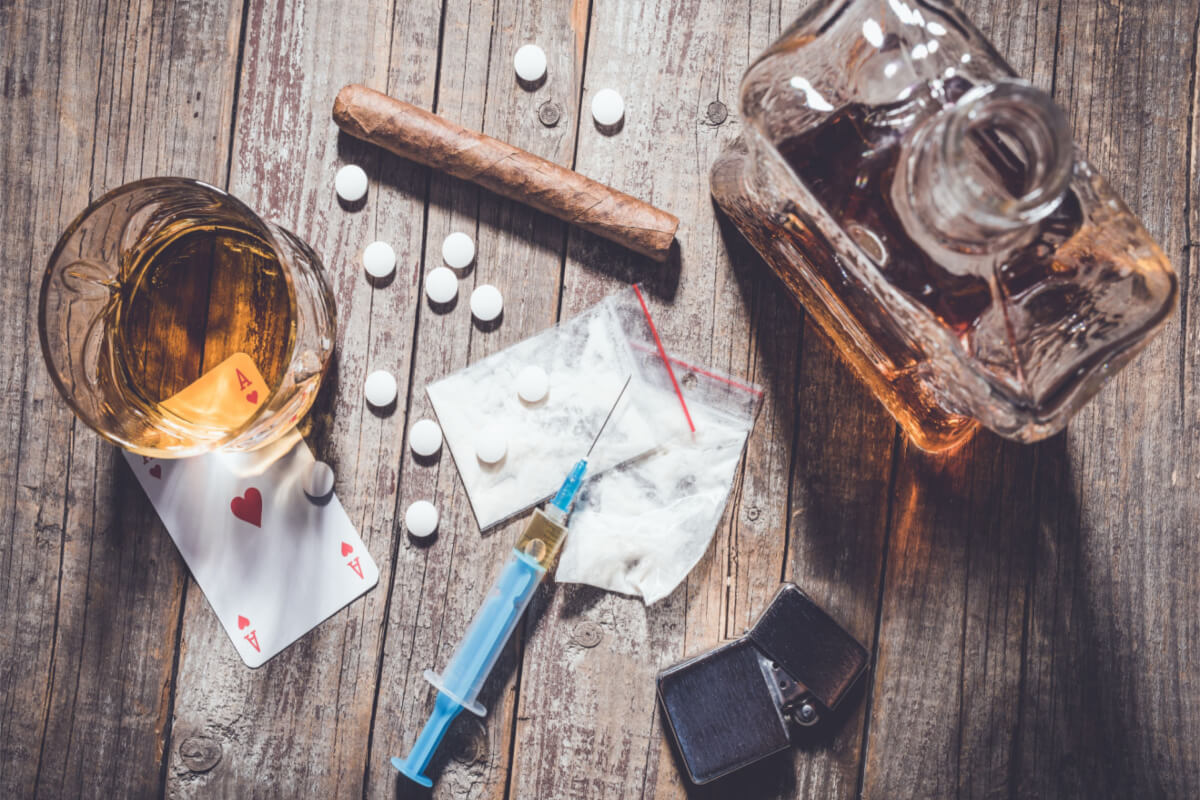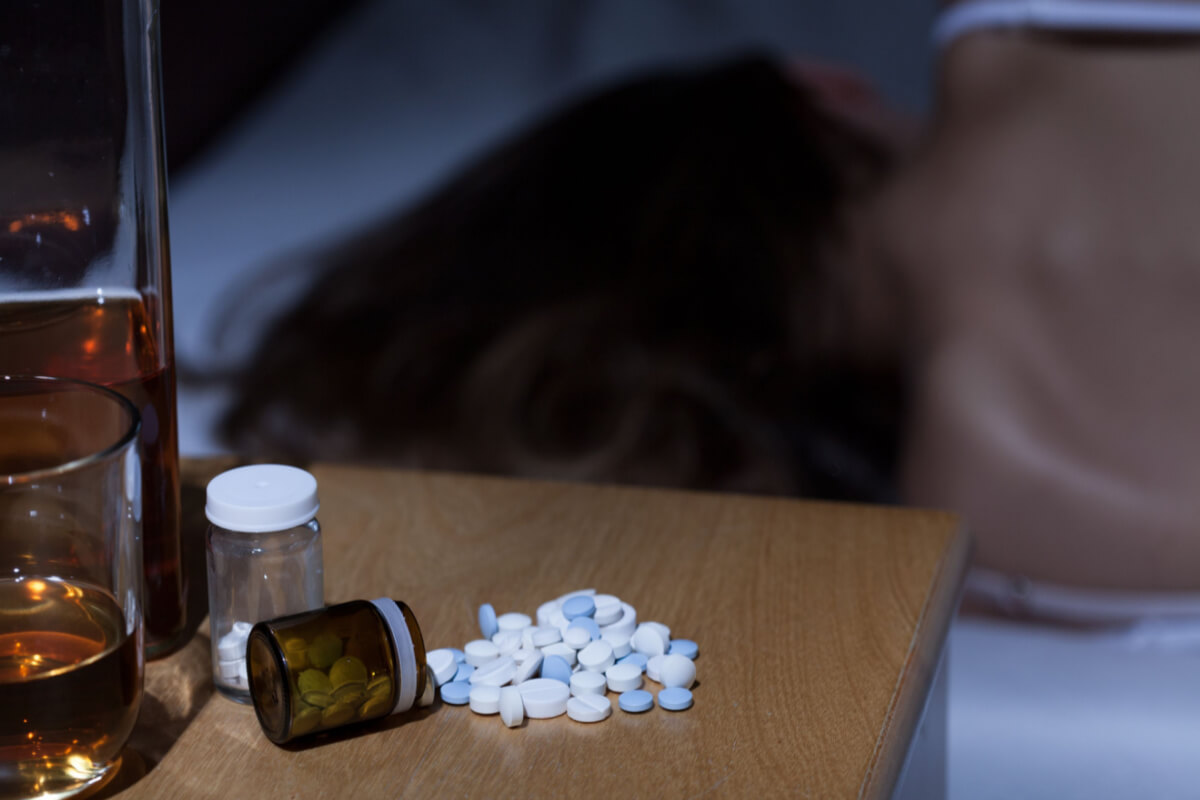
Up to half of all people with eating disorders also use alcohol or drugs. Up to 35% of all people with substance use disorders (SUD) also have eating disorders (ED). These statistics from the National Eating Disorders Association show just how often SUD and ED overlap.[1]
The combination of an ED and a SUD can complicate recovery. You will need treatment teams familiar with both conditions, and therapy you have should address both problems. With patience, persistence, and tenacity, you can recover.
Substance Use Disorders & Eating Disorders
What are substance use disorders? What are eating disorders? Before we can examine how these two conditions intermingle, let’s explain what they are.
Eating disorders (EDs) are conditions that change your relationship with food in a way that impairs your functioning or causes negative life consequences. Three main forms exist:
- Anorexia nervosa: Restricting food intake/calories to change or control your body’s shape or size.
- Binge eating disorder: Eating large amounts of food very quickly in episodes
- Bulimia nervosa: Similar to those with binge eating disorders, involves binging (overeating) with addition of purging (compensating in some way for the overeating, either with laxative use, vomiting, excessive exercise, etc.)
Substance use disorder (SUD) also involves a changing relationship. You began using a substance like alcohol or drugs, and you lost control over how much you use.
Left untreated, a SUD can take over your life. Your thoughts, feelings, and plans all revolve around getting or using drugs.
How Often Do SUDs & EDs overlap?
People with eating disorders often develop substance use disorders and vice versa.
- Anorexia nervosa, 27% will develop a substance use disorder.
- Bulimia nervosa, 36.8% will develop a substance use disorder.
- Binge eating disorder, 23.3% will develop a substance use disorder.
Shared risk factors may be to blame for this interconnectedness, such as:
Trauma
A childhood filled with problems can enhance the risk of SUDs or EDs later in life.
Children abused or abandoned by their parents, struggling with loss, or dealing with trauma can develop a variety of issues as adults, including what researchers call health-jeopardizing behaviors. They include overeating, smoking, substance use disorders, and other mental illnesses.[3]
Poor Coping Skills
A long-lasting eating disorder can leave people feeling hungry and jittery. Addictive substances can soothe those uncomfortable sensations, allowing the person to continue limiting food intake.
Similarly, a long-lasting substance use disorder can result in appetite suppression. Amphetamines, for example, classically decrease appetite.
Personality Types
People with both SUDs and EDs may crave control over a body that doesn’t always cooperate. People who self describe as “type A”, who need control or who have chronic anxiety or depression may be at greater risk for developing EDs, SUDs, or both.
What Substances Do People with Eating Disorders Misuse?
People with eating disorders tend to abuse the same drugs that the general population dose, such as:[1]
- Alcohol
- Amphetamines
- Cocaine
- Heroin
Sometimes, specific drugs appeal to people with a specific type of eating disorder. For example, patients with bulimia may abuse laxatives to help compensate after binging. Individuals with restrictive anorexia may use amphetamines or cocaine, both of which classically decrease appetite. Someone with anxiety induced eating disorders may use benzodiazepines or alcohol for their anxiolytic effects.
This list isn’t all-inclusive. Each person with an eating disorder is an individual and may misuse different substances differently.
Diagnosing an Eating Disorder
Of people with both SUDs and EDs, most are diagnosed with an eating disorder first.[6] Unusual eating patterns cause dramatic changes in the way people look, and it’s often easier for doctors to spot common signs of trouble.
During your appointment, your doctor might ask about your eating habits either just as part of your routine care, or perhaps because you have expressed concerning behaviors around eating. Your doctor may diagnose an ED with physical signs alone. But you may also work through a self-assessment test like EAT-26. This standardized test includes questions about eating disorder symptoms.[7] High scores might suggest you need more help.
Diagnosing a Substance Use Disorder
Because SUD is so common, most doctors screen all their patients for risky substance use. If your doctor does ask you questions about substance use, try to answer honestly, and be open to advice your doctor may give about any concerns with your use.
What Happens in Treatment for ED and/or SUD?
Any program made to address a substance use disorder and an eating disorder should focus on collaboration with the patient.[8]
A well-rounded program will use several different approaches to help people understand how these issues developed and what should come next. These are a few strategies doctors can choose from.
Medical Stabilization
SUDs often cause uncomfortable withdrawal symptoms. Sometimes, quitting drugs abruptly can be unpleasant and potentially life-threatening. Tapering drugs, using medications to ease symptoms, or both can help people address the early stages of recovery.
People with longstanding EDs may also need medical attention. Refeeding programs can help people with anorexia gain weight, and nutritionally rich diets could help obese people lose a little weight if medically recommended. [9]
Doctors may also need to address heart disease, stomach ulcers, and infections caused by disordered eating or drug use.
Cognitive Behavior Therapy
Cognitive Behavioral Therapy (CBT) is a type of therapy in which the individual and the therapist examine thoughts that cross your mind right before you engage in destructive habits and learn strategies to change those thoughts and behaviors. It has been highly studied and shown to be effective for improving both ED and SUD.
Medication for Addiction Treatment
Medication for Addiction Treatment (MAT) programs include both pharmacological treatment to help with cravings and withdrawal associated with substances. The medications serve to stabilize you physically and mentally enough that you can continue to work with a mental health professional.
Interpersonal Psychotherapy
Interpersonal psychotherapy is a type of therapy that helps to repair poor relationships that may be triggering an ED or SUD .[10] It can help people to challenge their negative thought patterns and behaviors, so they can embrace a more balanced way of thinking.
Therapy Groups
Some individuals prefer group therapy to individual therapy. Alcoholics Anonymous and Narcotics Anonymous are well known examples of national group organizations to help individuals recovering from SUD. Many treatment programs for both SUD and ED offer group therapy for those that prefer it to individual therapy.
How to Find a Treatment Provider You Trust
You’ll work with your treatment team for months, if not years, and it makes sense to connect with people you can trust. How can you do that? Start by asking questions.
Before you settle on any provider, find out the following:
- Can they treat both issues? Some teams work in isolation.[11] You’ll visit one group for your eating disorder and another for your substance use disorder. It’s best if you get help for both conditions at the same time from one team.
- Can they help you physically? Some ED providers aren’t ready to help with chemical detox or MAT.[1] Make sure that your teams know you will need help to get sober.
- Do they work with your insurance provider? Some facilities will call the insurance company for you to ensure you qualify. Talk to the team about what insurances they accept, and payment plans if they are out of network.
Don’t be afraid to keep asking questions until you find a team that feels like a good fit for your needs.
Eating Disorders & Substance Abuse FAQs
How often do SUDs and EDs overlap ?
Very commonly: Up to 35% of people with substance use disorders also have eating disorders.[1]
Which condition typically comes first: an eating disorder or substance abuse?
Experts have no clear answer to this question. Some people develop eating disorders first. Others develop substance use disorders first. It very much depends on the individual.
Can substance abuse and eating disorders be treated at the same time?
Yes. Some teams aren’t qualified to help with both substance abuse issues and disordered eating, but plenty of programs work with both issues at once.
Do the same types of therapies work for substance abuse and eating disorders?
Not exactly. Some forms of therapy can address problematic thoughts that lie below both disordered eating and drug use. The therapies for EDs are largely behavioral, while therapies for SUD tend to be both behavioral and pharmacological: Unlike ED, there is good evidence for medication assisted treatment for many forms of SUD. Medications are highly effective for patients with alcohol use disorder and opioid use disorder in particular.

By Elena Hill, MD, MPH
Elena Hill, MD; MPH received her MD and Masters of Public Health degrees at Tufts Medical School and completed her family medicine residency at Boston Medical Center. She is currently an attending physician at Bronxcare Health Systems in the Bronx, NY where ... Read More
- Substance Use and Eating Disorders. National Eating Disorders Association. https://www.nationaleatingdisorders.org/substance-use-and-eating-disorders. Accessed May 2022.
- Clients with Substance Abuse and Eating Disorders. Substance Abuse and Mental Health Services Administration. https://store.samhsa.gov/sites/default/files/d7/priv/sma10-4617.pdf. 2011. Accessed May 2022.
- Insatiable Hungers: Eating Disorders and Substance Abuse. Social Work Today. https://www.socialworktoday.com/archive/070708p30.shtml. August 2008. Accessed May 2022.
- The Risk of Substance Use Among Adolescents and Adults with Eating Disorders. Cureus. https://www.cureus.com/articles/39648-the-risk-of-substance-use-among-adolescents-and-adults-with-eating-disorders. September 2020. Accessed May 2022.
- The Prevalence of Substance Use Disorders and Substance Use in Anorexia Nervosa: A Systematic Review and Meta-Analysis. Journal of Eating Disorders. https://jeatdisord.biomedcentral.com/articles/10.1186/s40337-021-00516-3. December 2021. Accessed May 2022.
- Comorbid Drug Use Disorders and Eating Disorders: A Review of Studies. Nordic Studies on Alcohol and Drugs. https://journals.sagepub.com/doi/abs/10.2478/v10199-012-0024-9. November 2017. Accessed May 2022.
- The Eating Attitudes Test (EAT-26). Eating Attitudes Test. https://www.eat-26.com/. Accessed May 2022.
- A Clinical Approach to the Assessment and Management of Comorbid Eating Disorders and Substance Use Disorders. BMC Psychiatry. https://bmcpsychiatry.biomedcentral.com/articles/10.1186/1471-244X-13-289. November 2013. Accessed May 2022.
- We Really Don't Know What Else We Can Do: Parent Experiences with Adolescent Distress Persists After the Maudsley and Family Based Therapies for Anorexia Nervosa. Journal of Eating Disorders. https://jeatdisord.biomedcentral.com/articles/10.1186/s40337-019-0235-5. February 2019. Accessed May 2022.
- Interpersonal Psychotherapy for Eating Disorders. Clinical Psychology and Psychotherapy. https://www.ncbi.nlm.nih.gov/pmc/articles/PMC3886290/. March 2012. Accessed May 2022.
- Substance Abuse and Eating Disorders Often Go Hand in Hand. NC Health News. https://www.northcarolinahealthnews.org/2019/05/06/substance-abuse-and-eating-disorder-often-go-hand-in-hand/. May 2019. Accessed May 2022.
Download Our Free Program Guide
Learn about our program, its effectiveness and what to expect
Related articles
Imagine what’s possible on the other side of opioid use disorder.
Our science-backed approach boasts 95% of patients reporting no withdrawal symptoms at 7 days. We can help you achieve easier days and a happier future.








